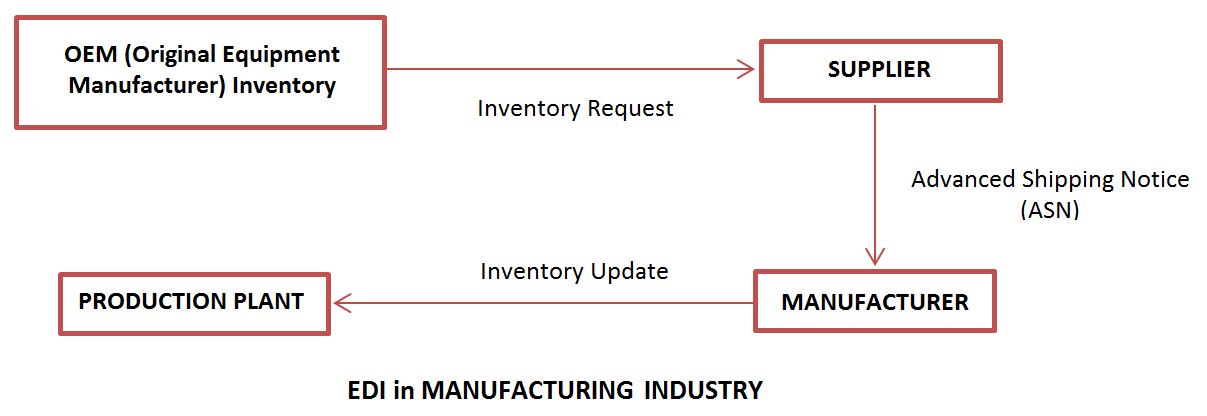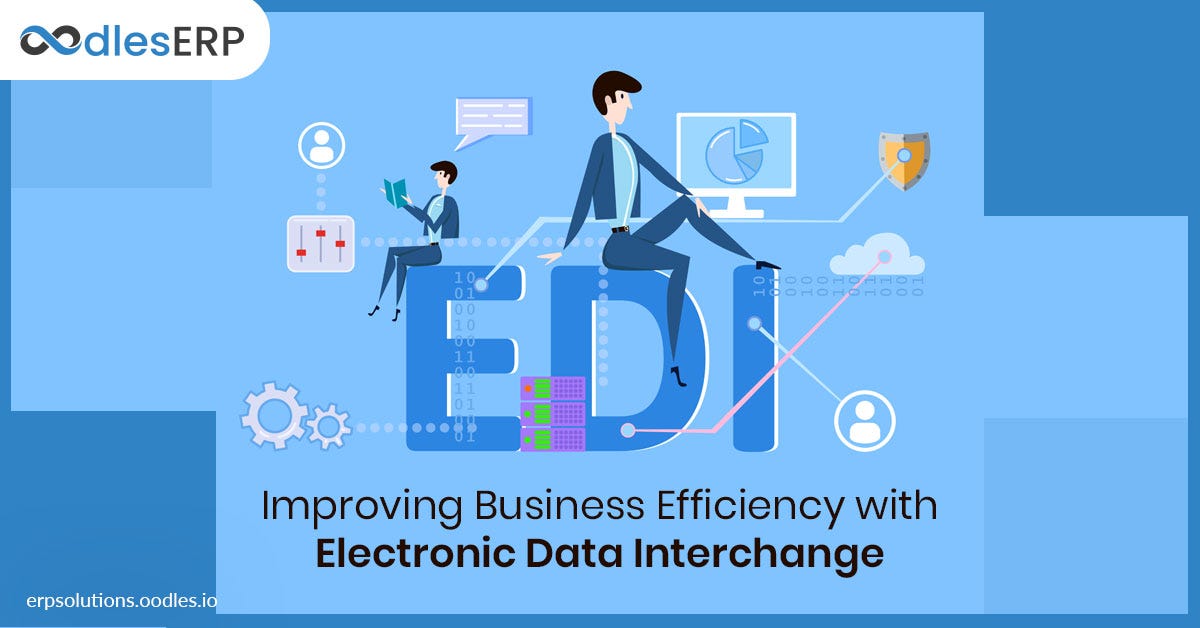Edi (electronic Data Interchange) Used In The Logistics System Ensures
What is EDI. Traditional B2B transactions like Purchase Order Sales Order Invoice Advance Ship Notice and Functional Acknowledgement often involve a series of steps to process.

What Is Edi Electronic Data Interchange Radley Corporation
But what is an EDI in logistics.

Edi (electronic data interchange) used in the logistics system ensures. EDI transactions are a type of electronic commerce that companies use for transactions such as when one company wants to electronically send a purchase order to another. EDI electronic data interchange is cost-saving business process automation used by trading partners to send and receive validated electronic documents data exchange from computer system to computer system in standard formats without human intervention. It can be said that it is a standard electronic form that replaces paper-based documents such as purchase orders or invoices to simply define EDI.
It is used in a wide variety of industry including the manufacturing and logistics sectors. Electronic Data Interchange EDI is the electronic interchange of business information using a standardized format. In addition to common EDI transactions such as orders or invoices each industry uses its specific EDI documents.
EDI stands for Electric Data Interchange and is the computer-to-computer exchange of business documents in a standard electronic form between business partners The system is. An example of EDI would be a company which uses a. The EDI or Electronic Data Interchange is a form of information transfer that does not require physical papers.
EDI which stands for electronic data interchange is the intercompany communication of business documents in a standard format. EDI stands for Electronic Data Interchange. By automating paper-based transactions organizations can save time and eliminate costly errors caused by manual processing.
The results of the study confirm EDI as an instrument for improving the efficiency of supply. One important point to note is that the term EDI simply denotes the concept of information transfer whereas EDIFACT is the standard in which the UN has set to give. What are the benefits of EDI.
This study concentrates on the role of electronic data interchange EDI a valuable type of IT used for the transfer of inter-organizational information in the supply chain. EDI documents include purchase orders invoices payment documents bills of lading inventory. EDI has particularly gained popularity in logistics and retail.
Enables a larger volume of transactions. Electronic Data Interchange in logistics ensures the operational interaction between business partners buyers suppliers 3PL warehouses forwarders etc at all stages of the delivery and improves the management of complex business processes. EDI or Electronic Data Interchange is a technology that helps trading partners and organizations get more done speed up logistics timelines and eliminate manual errors by automating business-to-business B2B communications.
Electronic Data Interchange EDI is the computer-to-computer exchange of business information in a standard electronic format between business partners. While Electronic Data Interchange EDI has been in use since the late 1960s there are still many organizations that use their existing legacy systems for processing B2B transactions. The simple definition of EDI is a standard electronic format that replaces paper-based documents such as purchase orders or invoices.
This is especially useful in logistics where paper documentation is crucial in the transportation of goods across borders. Electronic Data Interchange or EDI for short is used to automatically exchange data between applications. It is a protocol that enables the electronic exchange of Business Documents and transactions such as invoices and POs.
EDI remains the be standard for electronic transactions between businesses and this is no exception in the logistics industry. A process which allows one company to send information to another company electronically rather than with paper. This technology allows communication between the different supply chain stakeholders thanks to use of a common language based on a set of global standards.
This technology is based on the electronic exchange of data between the distributor supplier and logistics operator through EDI tools. The Complete Guide to Electronic Data Interchange. Electronic Data Interchange commonly shortened to EDI is a standard format for exchanging business data.
EDI is an electronic data interchange system increasingly widespread in the logistics sector due to its ability to perform transactions easily quickly and efficiently. EDI not only makes it easier to transmit these documents through electronic means but also cuts down on costs reduces errors and boosts productivity. In essence this means that it is the actual system of the one business that is exchanging information with the other businesss system no human intervention needed.
Electronic data interchange EDI is the transmission of business documents between companies in a standardized format. EDI or Electronic data interchange is a technology for exchanging information in real-time between business partners based on standard and structured electronic messages. This is a recognized standard in business because this protocol helps accelerate the entire supply chain from procurement to payment.
The study uses data obtained from a survey carried out in the food industry to test the use of EDI by contractors and customers. The analysis and treatment of the information and the automatic generation of orders dispatch notices and purchase orders aim to respond to the anticipated demand through the efficient delivery of goods at the required time. Thus in transportation the following types of EDI documents are most commonly used.
EDI helps many organizations that produce ship purchase and sell goods or.
Implementation Of Electronic Data Interchange Technologies By Suppliers As Solutions To Enhance Traceability In Upstream Supply Chain

Electronic Data Interchange Edi Week 7 Edi Introduction

Electronic Data Interchange Edi Week 7 Edi Introduction

Electronic Data Interchange Edi Week 7 Edi Introduction

Electronic Data Interchange Learning Electronic Data Systems Data Electronics

Electronic Data Interchange Edi Edi For Logistics Is A Standard Way To Electronically Transfer Data Between Software Applic Business Analysis Logistics Data

Chapter 16 Global Logistics And Materials Management Developed

Electronic Data Interchange Edi Components Applications Advantages Bba Mantra

Improving Business Efficiency With Electronic Data Interchange By Erp Solutions Oodles Medium
Implementation Of Electronic Data Interchange Technologies By Suppliers As Solutions To Enhance Traceability In Upstream Supply Chain
Implementation Of Electronic Data Interchange Technologies By Suppliers As Solutions To Enhance Traceability In Upstream Supply Chain
Edi What Is Electronic Data Interchange The Benefits Of Edi

Improving Business Efficiency With Electronic Data Interchange By Erp Solutions Oodles Medium

Pdf Electronic Data Interchange From Its Birth To Its New Role In Logistics Information Systems

Collaborative Web Portal Edi Solutions Electronic Data Interchange Solutions Edicom Web Based Customer Success Stories Solutions

How Edi Electronic Data Interchange Can Simplify Your Supply Chain And Save You Money Port Jersey Logistics

Edi Electronic Data Interchange

Electronic Data Interchange Edi In The Supply Chain Edi2xml

Post a Comment for "Edi (electronic Data Interchange) Used In The Logistics System Ensures"